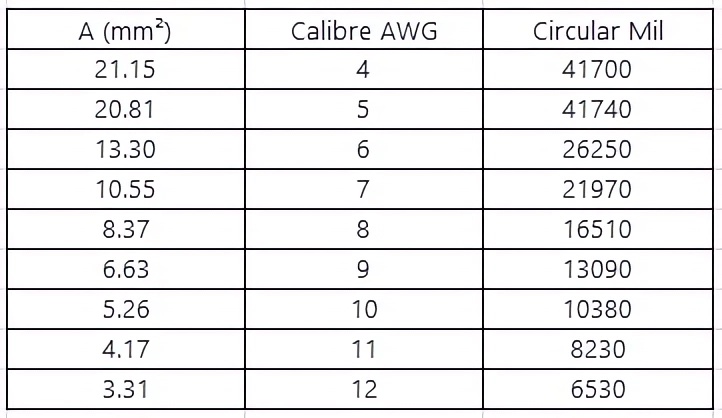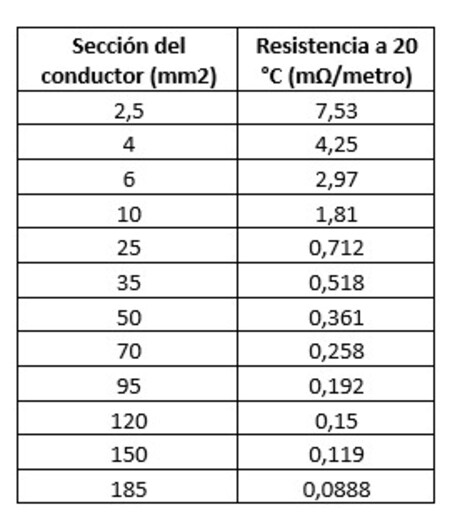AC/DC Power
Voltage drop in DC electrical conductors due to electrical resistance
After ampacity, or the maximum current-carrying capacity of a conductor in amperes, voltage drop is the most critical parameter when selecting wiring. Therefore, here we present how to calculate voltage drop in DC electrical conductors.
This phenomenon involves the power loss that occurs in the conductor due to its electrical resistance. As a result, the amount of power generated by the source is not the same as what reaches the load. Because the voltage at the equipment is lower.
The above is represented in the following image.

It is known that VEQUIPO is lower than Vdc, and it is well-understood that «energy cannot be created or destroyed, only transformed.» Following this principle, we will have:
Vdc = VRC + VRC + VEQUIPO
On the other hand, it is important to clarify that this factor is different from its counterpart in AC power, and its calculation method is also different.
Furthermore, there are two methodologies to calculate it. Next, we’ll describe one of them. Let’s see!
Calculation of voltage drop in DC using electrical resistance values of conductors
For this, the following equation is used:

Where:
ρ = The resistivity value of the conductor material at a temperature of 20°C, which corresponds to:
• Copper is equal to 1.7 x 10-8 ohms per meter (Ω – m)
• Aluminum is equal to 2.65 x 10-8 ohms per meter (Ω – m)
L = Total length of the circuit, i.e., the distance from the power source to the equipment and vice versa
I = Maximum current value that will flow through the conductor or the maximum equipment consumption in Amperes
A = The area or cross-section of the conductor.
Please note that you should ensure that all data is in the same units of measurement. Using the table shown below, you can determine the conductor’s gauge using the area:

Then you find the resistance value with the conductor’s area or cross-section in the following table:

Once you have the value of R, you calculate the voltage drop in the conductor using the following equation:

Where I is the maximum current value consumed by the equipment. This VC is the voltage drop value in the conductor from the source to the load. So for the entire circuit, if the same conductor is used, VT = 2 x VC.
In other words, VT would be the voltage drop in the circuit. If you want to know the voltage level that reaches the load. You just need to subtract this value from the voltage supplied by the source:
VCARGA = VDC – VT
Then you should check if this voltage level is suitable for the operation of the equipment. If it is not, you should increase the conductor’s gauge until the voltage is satisfactory.
Finishing…
In our sizing and design of dc power systems for telecommunications and critical systems course , we delve further into this topic, and you’ll learn its application. To find out about its content, follow this link.
In our next post titled Calculation of voltage drop in dc electrical conductors due to commercial conductivity factor we will explain another method. Don’t miss it!
At energydcac, you will find interesting content related to solar and DC energy. Also, we invite you to register with us for free

